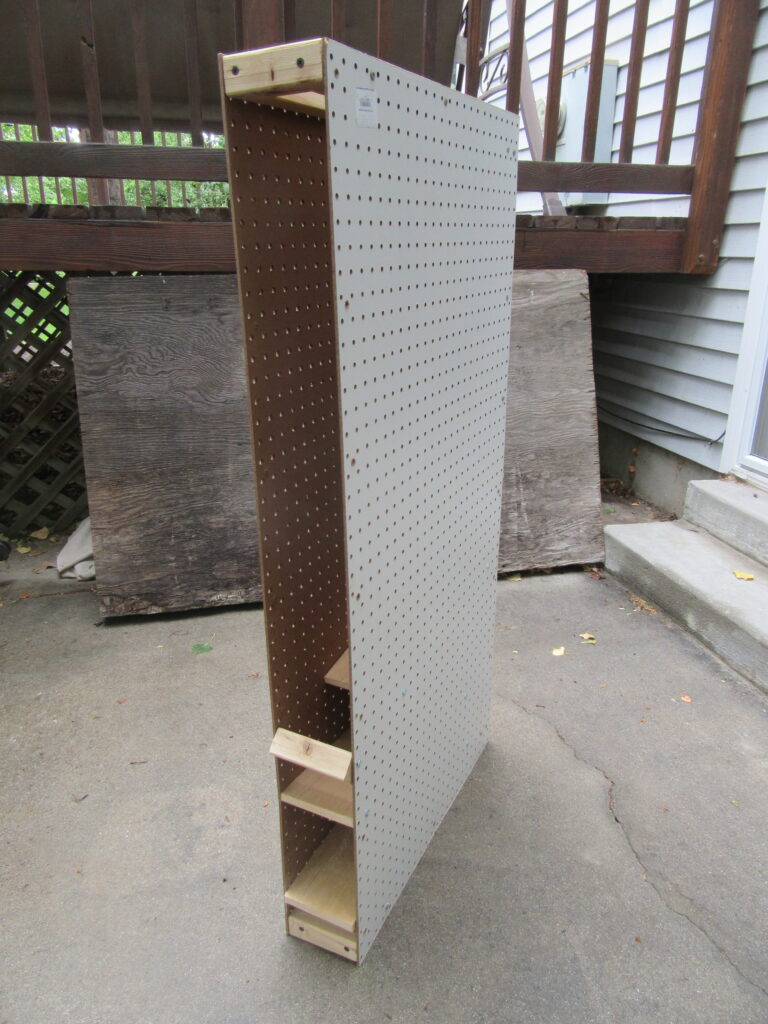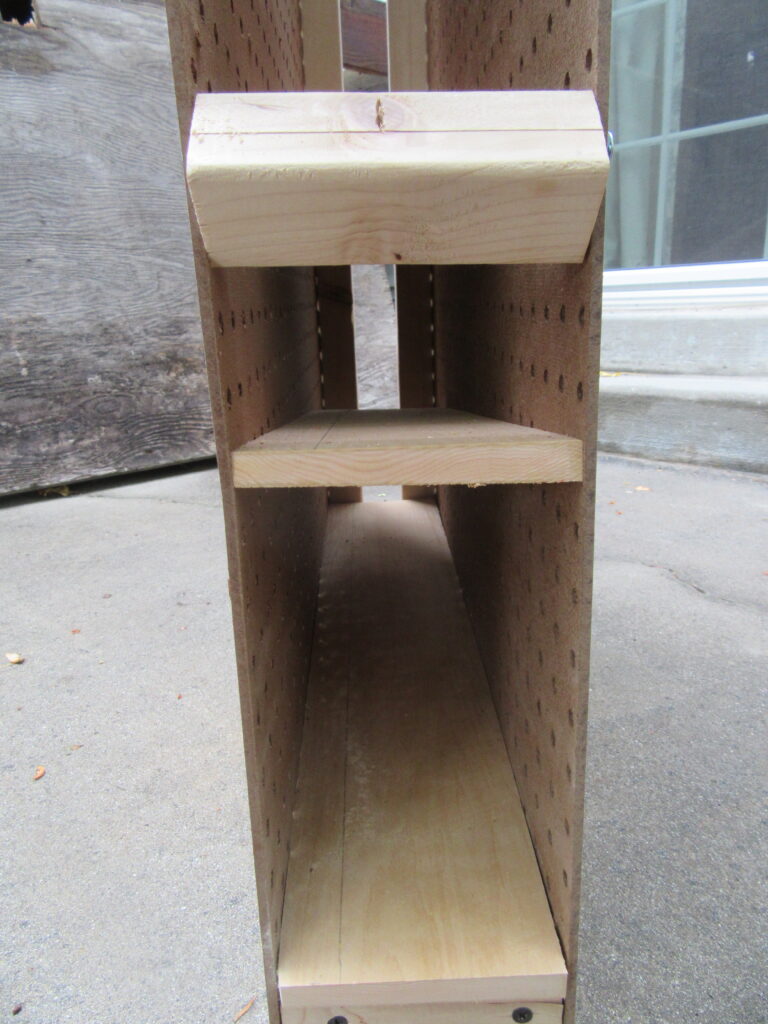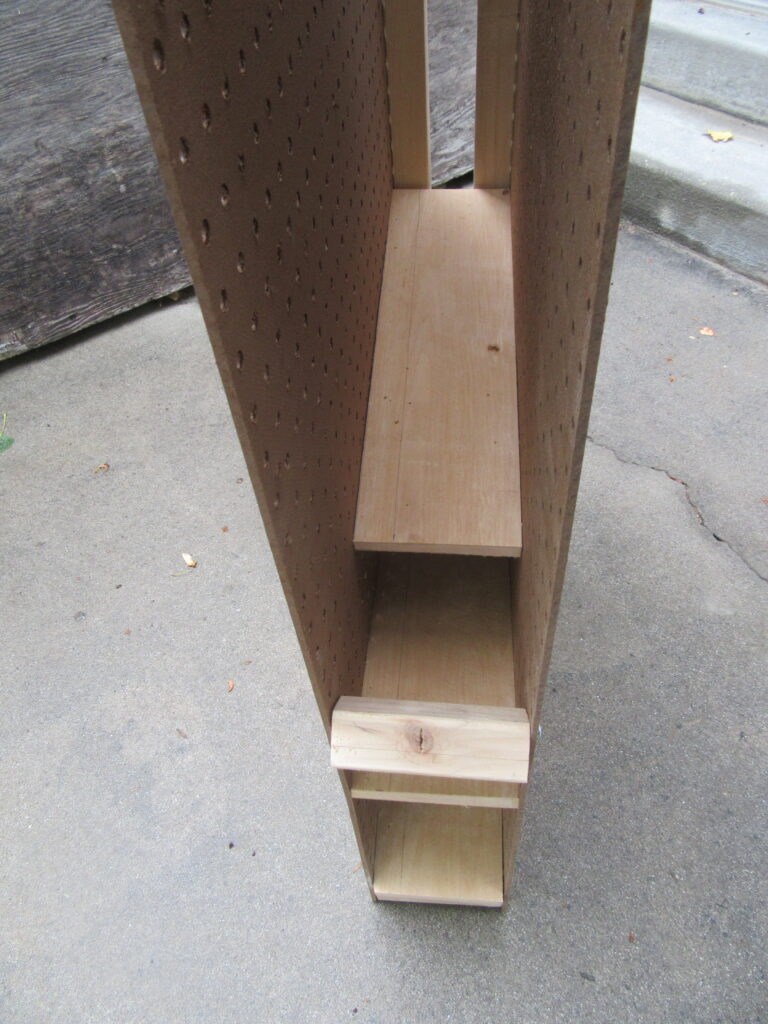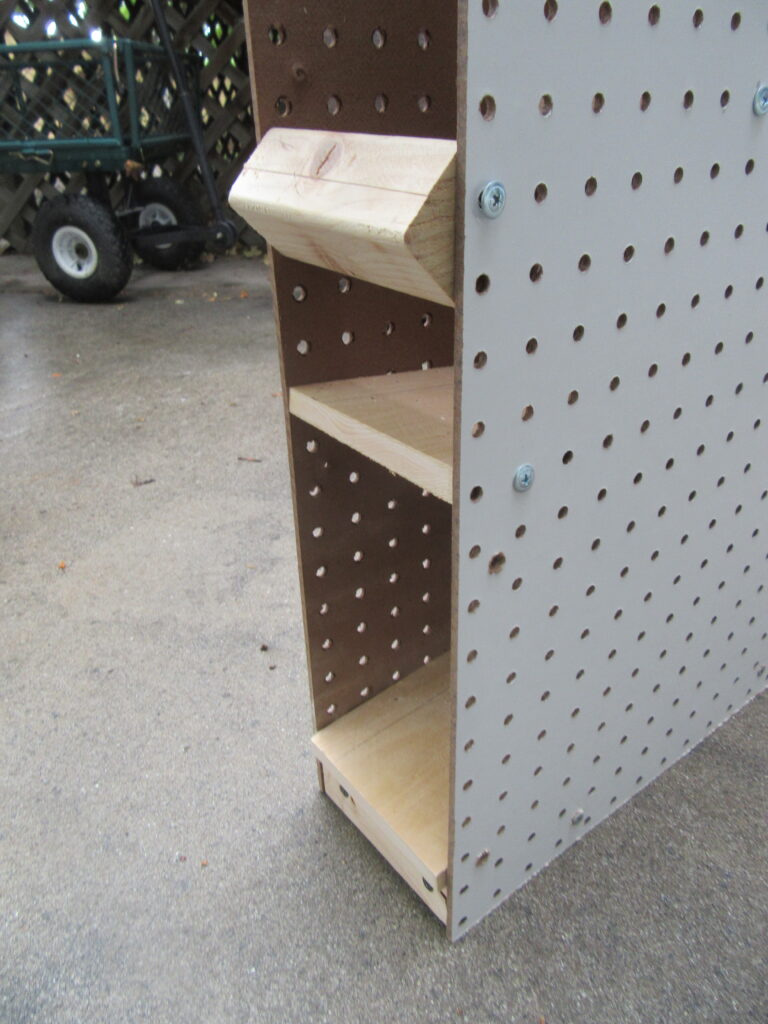A few months ago I bought a table saw and a dado stack set to help with some major projects I have coming up this year. I reviewed the DeWalt table saw yesterday. Today it’s the dado set’s turn.
I’m not a sophisticated woodworker. No high-quality, rare hardwood, micro-tolerance projects for me. So admittedly, I did not go after a precision dado set but rather something passable that would work with the more rough work I do. I picked up the Freud 8″ Stacked Dado Set for All Saws (SD208S).
The set comes with two outer blades, three chipper blades, a pair of spacers, and a bunch of shims in two sizes, all for about $100. It came in a fairly durable plastic carry case with a compartment on either side. the blades and spacers all go on two central spindles with screw-in caps to hold them in place in the case. It also includes a cardboard instruction card that doubles as the packaging front cover. Inside it tells you the necessary configurations to create stacks of all sizes from the minimum to the maximum.
The instructions are fairly good, so it wasn’t difficult for me to put together a test stack of half an inch to try out. Once I was more comfortable with dados I switched to a 3/4 inch stack in order to mass-produce some 1/5″ dados. The rips went well, with only a little splintering and tearing. The sides and bottoms of each dado were smooth. I have no micrometer, so I can’t verify the sizing was accurate to any particular degree of tolerance, but I tried the intended board size in the groove and it fit well. Considering I was making two cuts to achieve the 3/4 inches, and had sized the stack just a touch wider than 3/4 to allow for overlap, any discrepancy is more likely to be poor measurement on my part. In any case it’s good enough for what I’m doing. I suspect, as thin as the shims get, if precision is essential you can probably adjust accordingly.
I found putting a stack together to be fairly simple. The shims, being flimsy, tend to flex and lock to the arbor, making them a little harder to remove, but I suspect that’s normal and goes with the territory. Considering how much easier this is to use than my router (I don’t have a router table), I’m not going to complain.
All in all, I’m pleased with it. I just hope I never lose the instructions. I understand Freud is a fairly good brand. This particular set is rated a 4.7/5 with 430 reviews on Amazon. Should I need another dado set in the future I’ll likely look at Freud first.




